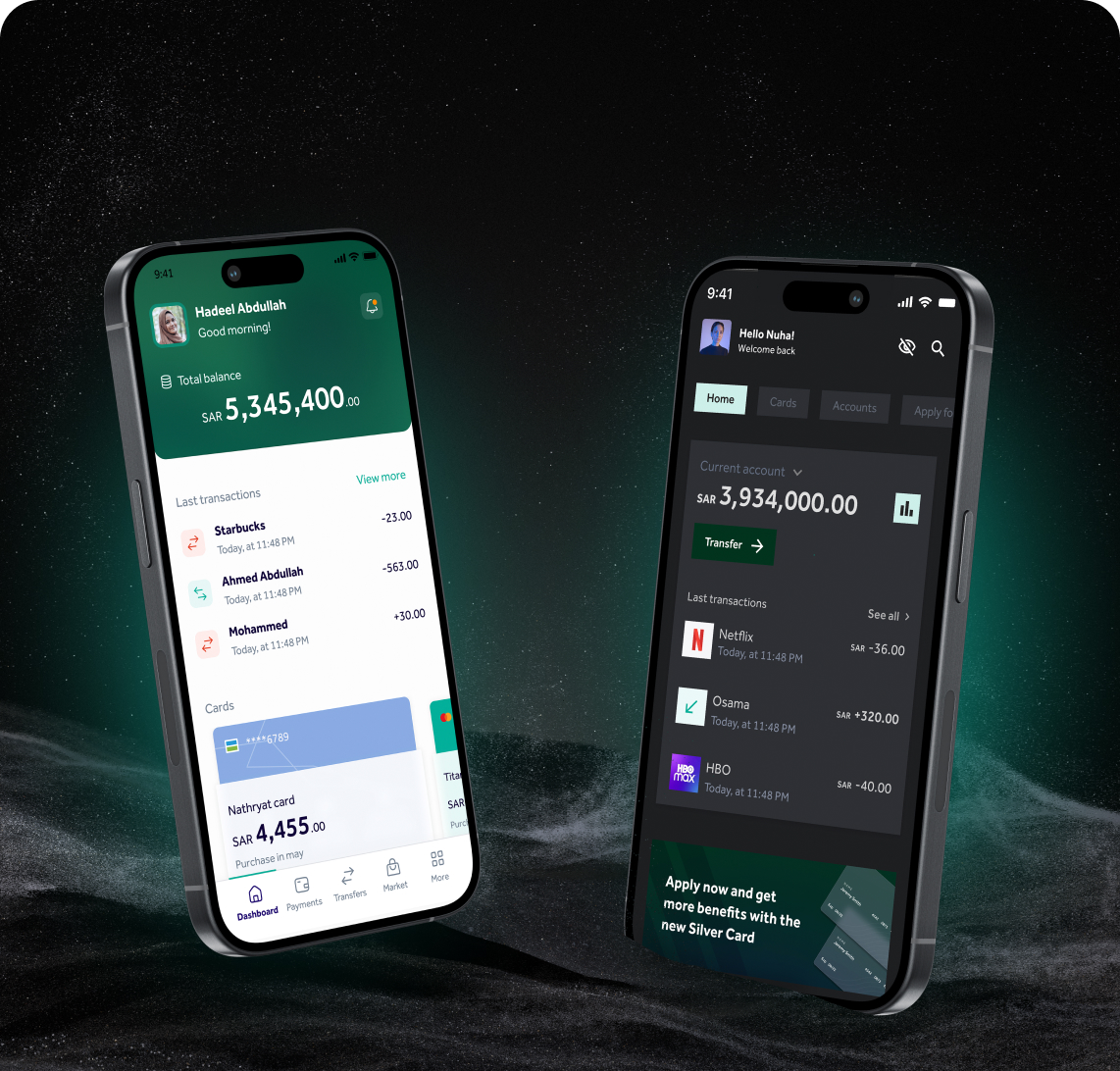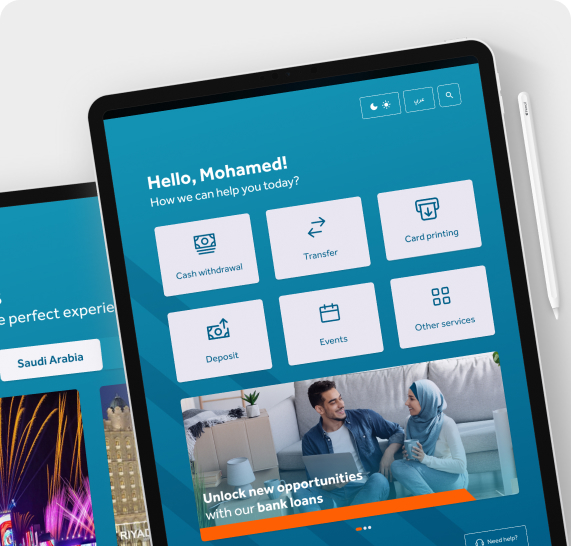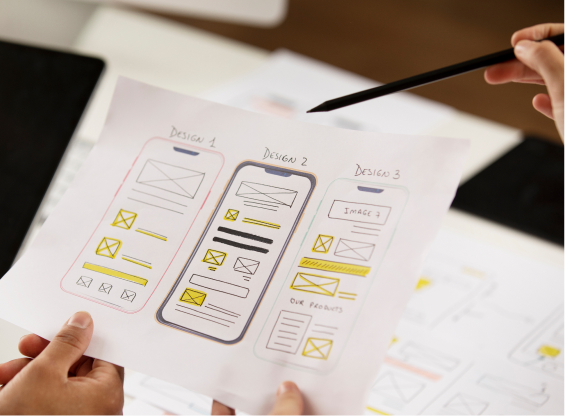We’re a UI/UX agency in Saudi Arabia, crafting innovative, user-centered
digital solutions that take
your ideas from concept to launch.
Our Core Services
We provide end-to-end services, combining research, design, and development to deliver impactful digital products that elevate user experiences and drive business growth.
UX/UI Design
We design captivating digital experiences by understanding user needs that overlap relative interfaces that connect.
Product Design
Dialectics to creating innovative and basic-oriented solutions, we helps bring your ideas to life through smart, scalable design.
Product Analysis
We evaluate your products user interface and functionality to ensure seamless user interaction and high performance.
Digital Artifacts
We create innovative digital artifacts that allow your brands presence and engagement, helping you stand out.
Case Studies
We bridge the gap between beautiful design and intuitive user experiences, crafting digital products that are both visually stunning and a joy to navigate.

Case Study 1
The project is focused on redesigning the user interface of a banking application. The goal is to enhance the user experience of the app by improving the visual design, usability, and functionality.

Case Study 2
The project involved rebranding an ATM kiosk interface to improve user experience and reflect the bank's modern, customer-centric approach. The redevelopment aimed to enhance usability and streamline navigation
Let’s Create Something Incredible Together
We’re excited to collaborate and bring your vision to life with innovative, user-centered design solutions.
From concept to launch, we can help you at every stage!
All-in-one solution – from discovery and design to seamless development, all under a single roof.
Strategic Research to Understand Your Needs
We start by understanding your business, audience, and market trends, laying a solid foundation for a tailored approach.
- Market Analysis
- User Research
- Audience Mapping

Crafting Seamless Experiences, One Screen at a Time
We translate ideas into interactive wireframes and high-fidelity prototypes that align with your goals and user expectations. Every element is designed with precision to ensure a smooth and delightful experience.
- Wireframing
- Prototyping
- UI Design

Turning Designs Into Functional Digital Products
We build scalable and robust digital products using modern technologies. From frontend to backend, our team ensures performance, security, and a seamless user experience across all devices.
- Frontend Development
- Backend Architecture
- Responsive Design

Achieve your goals faster with UXovation!
End-to-End Services
From research to development, we deliver complete digital solutions for seamless Integration and success.
Efficient Solutions
Our agile approach accelerates development, helping you bring high-quality products to market faster and more efficiently.
Dedicated Team
Work with the best-fit experts who are led by seasoned professionals committed to delivering tailored solutions.
Cost Effective
Get the best talent with agile management and seamless involvement, ensuring quality without breaking the bank.
Have Questions?
Find answers to common questions or contact us for more details.
We don’t just create beautiful designs—we craft experiences that truly connect with your users. Our process is research-driven, ensuring every decision is backed by real user insights. Plus, we work closely with you to align design with business goals.
We cover every stage from discovery to final implementation to ensure a seamless experience. Our holistic approach helps reduce friction, boost user engagement, and ultimately drive better conversions for your product.
Absolutely! Whether it’s a complete overhaul or fine-tuning specific areas, we specialize in revamping digital experiences to make them more intuitive, engaging, and effective.
It depends on the scope. A small project might take a few weeks, while larger, more complex projects can take months. We assess factors like research depth, design complexity, and development requirements to provide a realistic timeline.
Costs vary based on project size, complexity, and deliverables. We offer tailored pricing, so let’s chat about your needs, and we’ll provide a quote that makes sense for your budget.
We’ve worked across multiple industries—tech, healthcare, finance, e-commerce, and more. Our designs have led to increased conversions, improved retention, and overall better user satisfaction for our clients.
Let's Build Your Idea From The Ground Up
Start your journey today with customized solutions to suit your needs.
